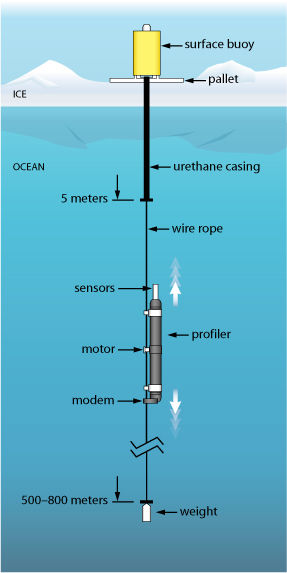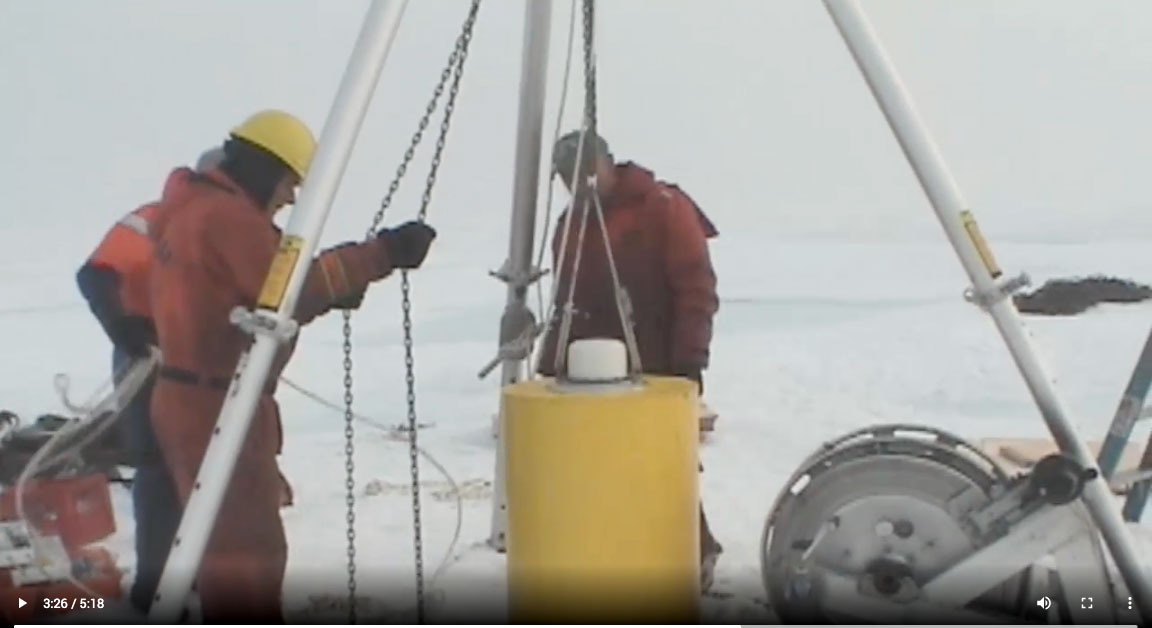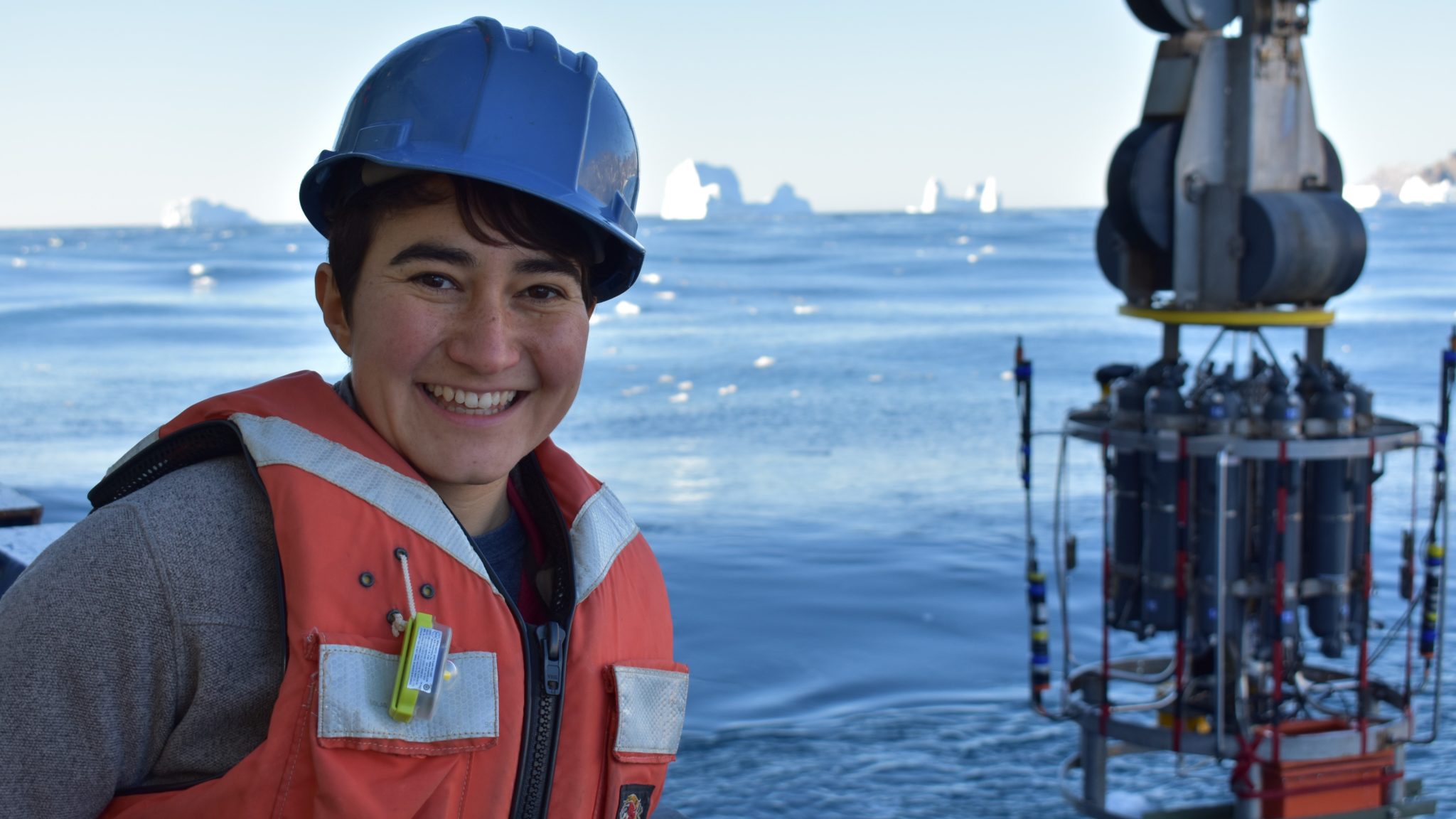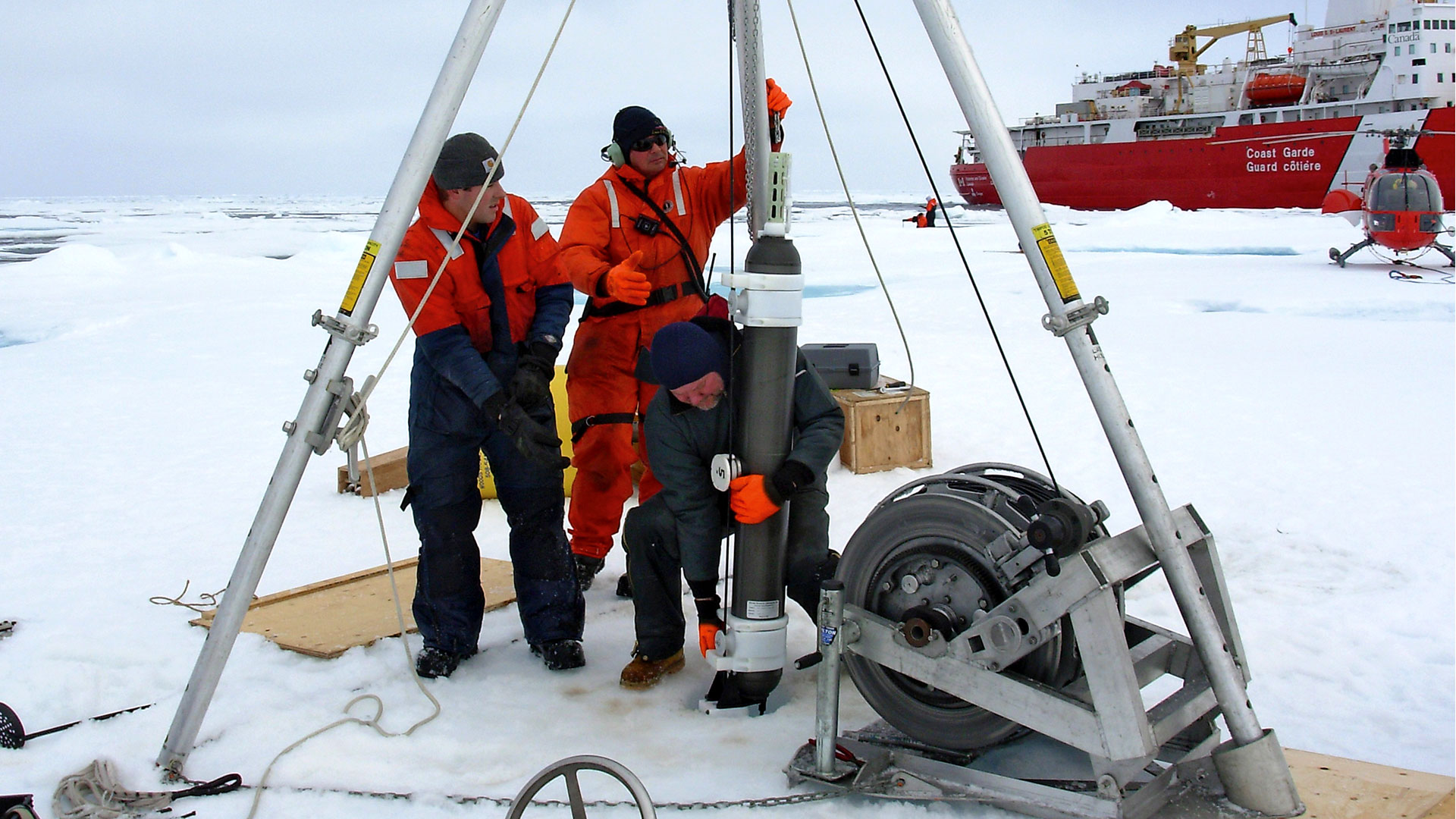
Overview
Recent studies indicate that the Arctic may be both a sensitive indicator and an active agent of climate variability and change. While progress has been made in understanding the Arctic's coupled atmosphere-ice-ocean system, documentation of its evolution has been hindered by a sparse data archive. This observational gap represents a critical shortcoming of the ‘global’ ocean observing system. Addressing this gap, a new instrument, the ‘Ice-Tethered Profiler’ (ITP) was conceived to repeatedly sample the properties of the ice-covered Arctic Ocean at high vertical resolution over time periods of up to three years. Analogous to the international Argo float program that is employing autonomous profiling floats to return real-time seawater property data from the temperate oceans, we are working together with fellow North American, European and Asian investigators to maintain a loose array of ITPs and other similar instruments throughout the ice-covered Arctic. We hope that the analysis of data from these instruments will lead to better understanding of the Arctic Ocean's response and role in global climate change.
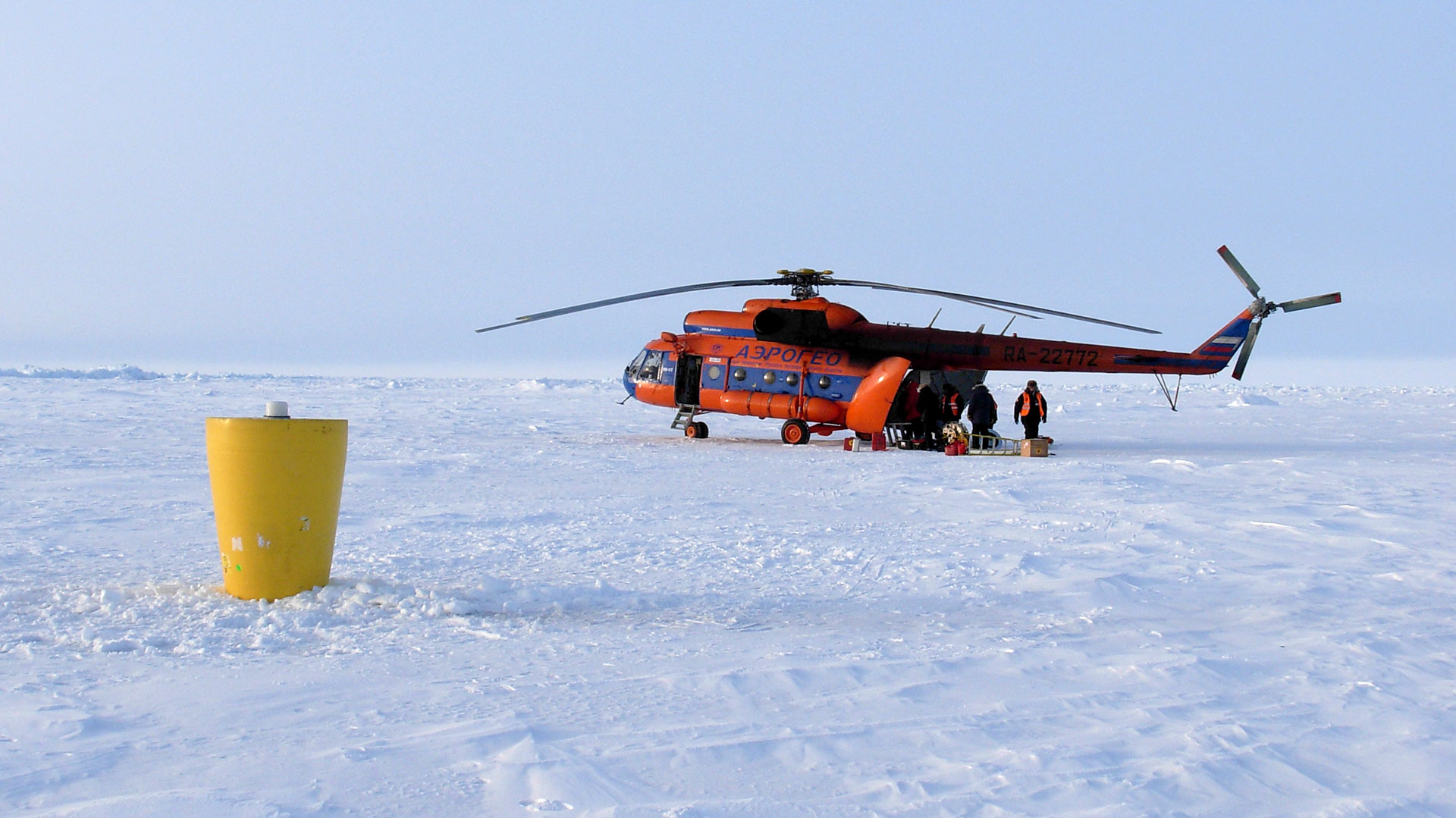
How it Works
The ITP system consists of a small surface capsule that sits atop an ice flow and supports a plastic-jacketed wire rope tether that extends through the ice and down into the ocean, ending with a weight (intended to keep the wire vertical). A cylindrical underwater instrument (in shape and size much like an Argo float) mounts on this tether and cycles vertically along it, carrying oceanographic sensors through the water column. Water property data are telemetered from the ITP to shore in near-real time.
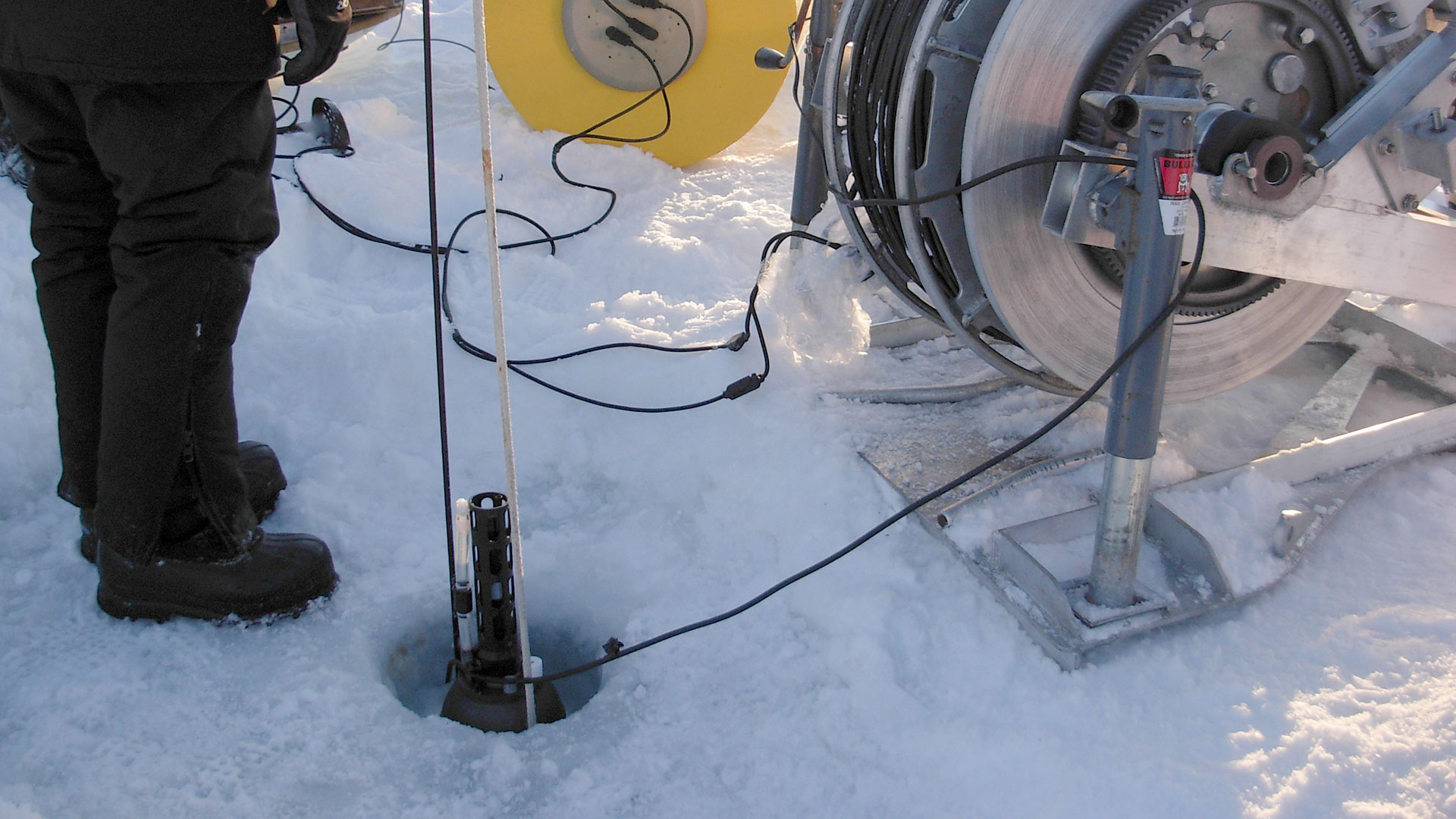
In the News
Ice-Tethered Profilers Featured on NBC Learn Program
This is a product of NBC Learn program, which in partnership with the National Science Foundation, explores the impact that climate change is having on our planet."
Waiting on the next freshwater flush
Could the unprecedented amounts of freshwater in the Beaufort Sea stall the current system that controls our climate? WHOI's Isabela Le Bras weighs in.
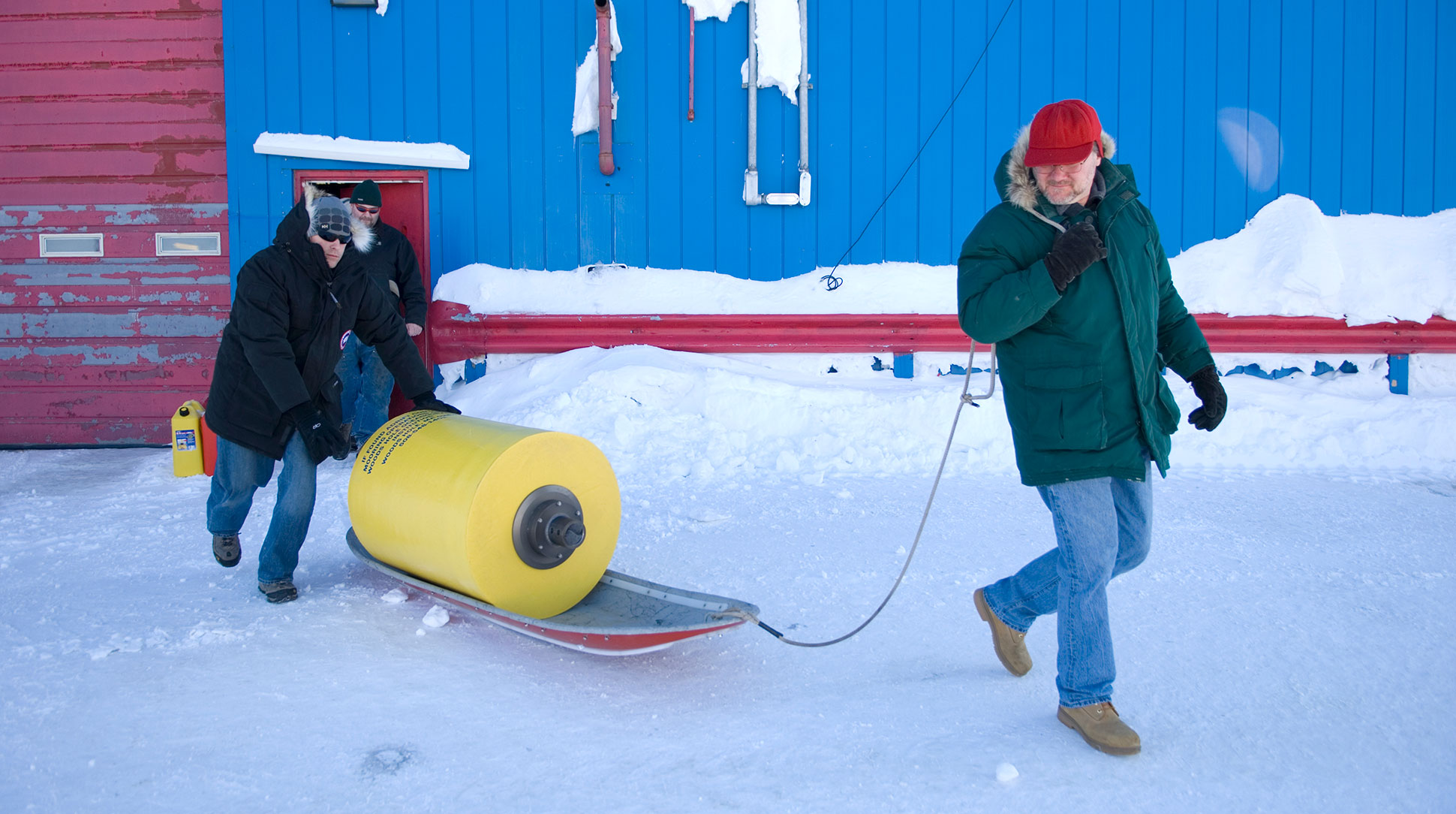
Acknowledgements
The engineering design work for the ITP was initiated by the Cecil H. and Ida M. Green Technology Innovation Program (a WHOI-internal program). Prototype development and construction was funded jointly by the U.S. National Science Foundation (NSF) Oceanographic Technology and Interdisciplinary Coordination (OTIC) Program and Office of Polar Programs (OPP). Ongoing ITP activities are being supported by the Arctic Sciences Division of OPP.
